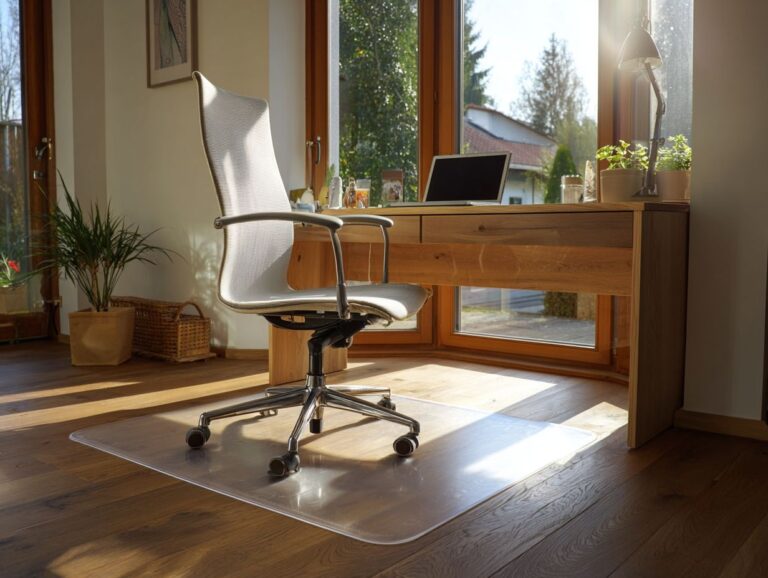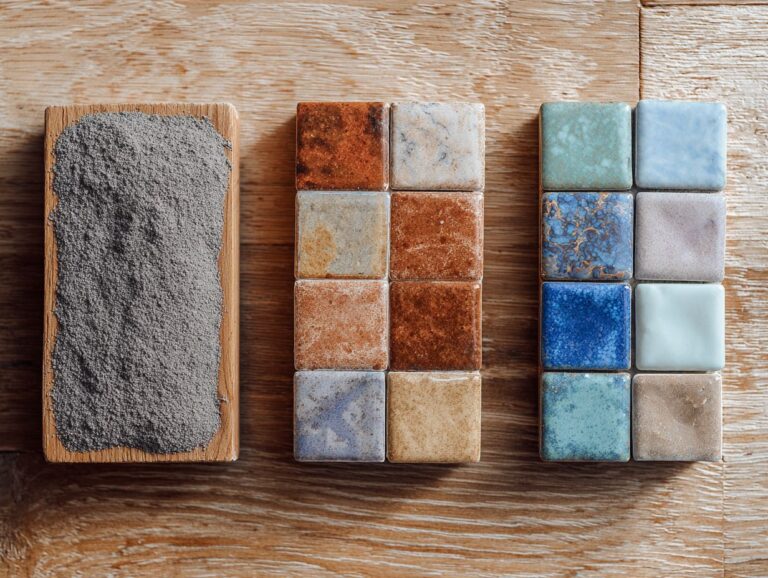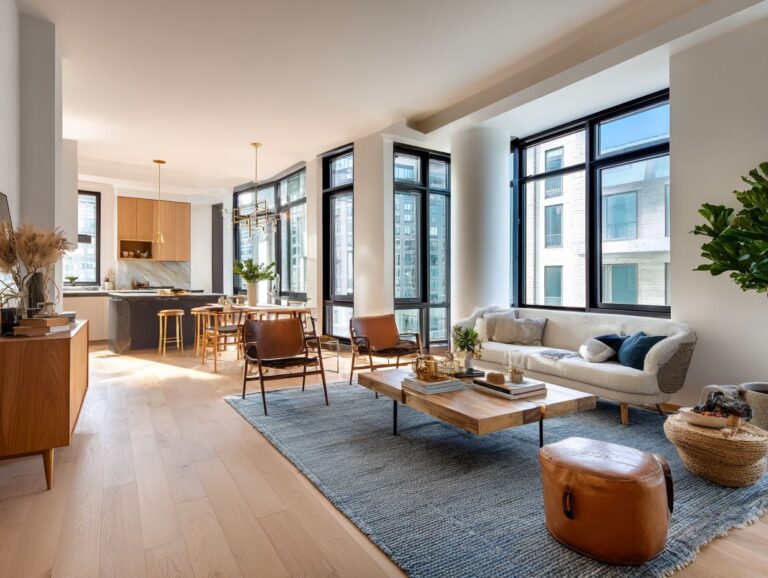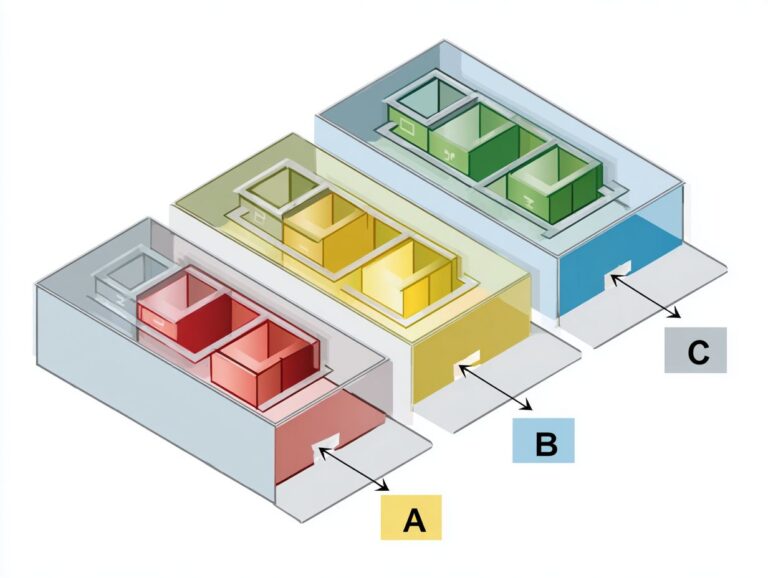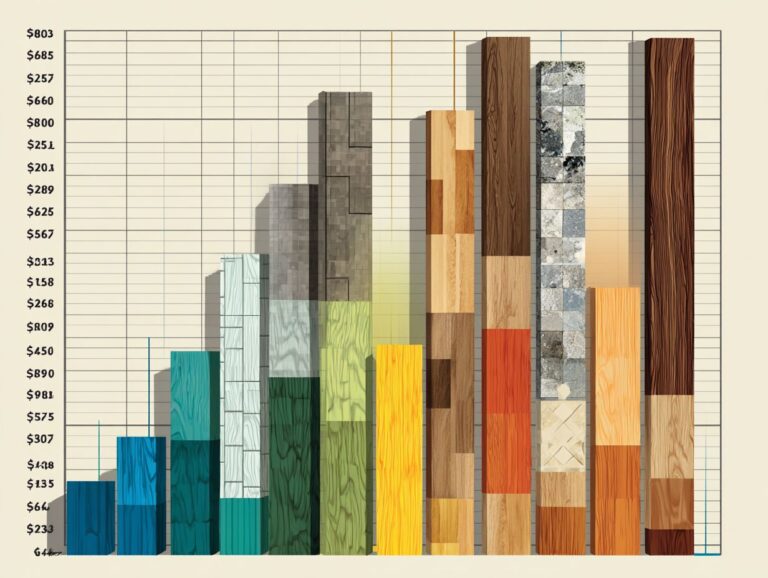Budget Flooring That Looks Expensive – Designer Tricks
Contents
- Introduction
- Global Flooring Market Statistics
- Understanding Flooring Materials
- Designer Tricks for Budget Flooring
- DIY Flooring Solutions
- Cost-Effective Alternatives to Expensive Flooring
- Maintenance Tips for Budget Flooring
- Incorporating Accessories
- Frequently Asked Questions
- What are some budget flooring options that can give the appearance of expensive designer flooring?
- How can I make my budget flooring look more expensive?
- Are there any affordable flooring materials that can pass for hardwood?
- What are some designer tricks for creating a luxurious flooring look on a budget?
- Can I install budget flooring myself, or do I need to hire a professional?
- Are there any budget flooring options that are durable and long-lasting?
Introduction
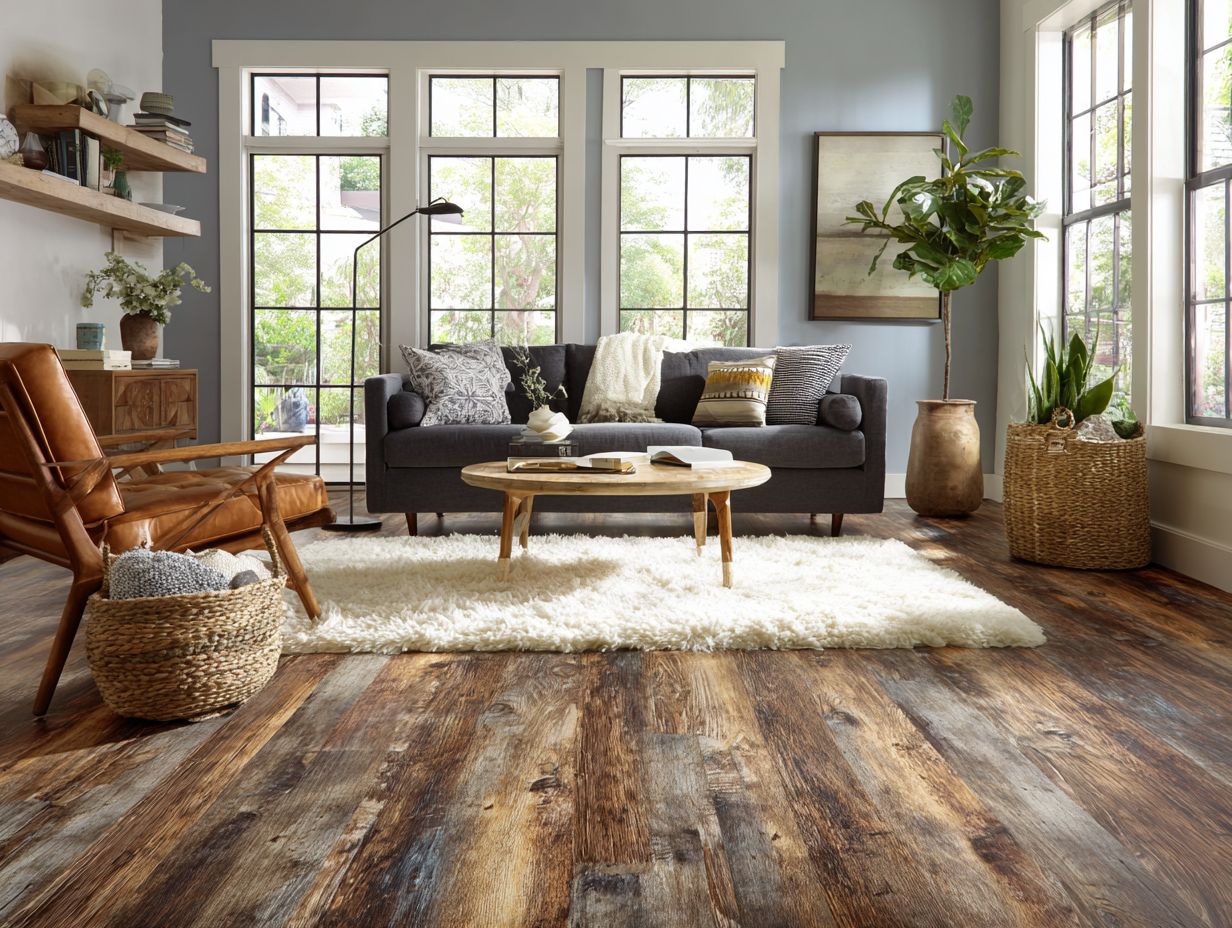
Key Takeaways:
Importance of Flooring in Home Design
Flooring serves as the foundation of any room’s design, influencing both the functionality and beauty of a space.
The choice between materials like hardwood and luxury vinyl can drastically alter a home’s ambiance.
For example, hardwood provides a warm and stylish look that attracts traditional buyers. On the other hand, luxury vinyl is tough and water-resistant, which makes it a good choice for active homes.
According to recent studies, quality flooring can increase home value by up to 10%. To assess your options, consider local climate, maintenance preferences, and style goals.
Also, go to a showroom to see how different flooring looks with your home’s lighting, helping you choose better.
Overview of Budget-Friendly Options
Looking for affordable flooring choices is important for homeowners who want a stylish look without spending too much money.
Among the top choices are laminate flooring and luxury vinyl flooring.
Laminate, typically priced between $1 to $3 per square foot, mimics the look of wood while being durable and easy to install. Luxury vinyl, costing $2 to $5 per square foot, offers a waterproof choice with various designs, suitable for kitchens and bathrooms.
Both options are low-maintenance, but laminate lacks the water resistance of luxury vinyl, which can be a deciding factor for moisture-prone areas. For those curious about how these options might affect long-term costs, you might find it helpful to explore our analysis of the true cost of cheap flooring.
Global Flooring Market Statistics
Global Flooring Market Statistics
Market Growth Projection: Flooring Market Size
Market Growth Projection: Revenue by Product Type
The Global Flooring Market Statistics Provide a thorough overview of the current state of the flooring market and what is anticipated for its growth in the coming years. The data emphasizes the market’s size, regional dominance, application segments, and product type revenue shares, highlighting significant trends and opportunities within the sector.
Market Growth Projection shows a substantial increase from a market size of $450.96 billion in 2024 to $469.59 billion in 2025. The forecast indicates substantial growth ahead $676.26 billion by 2033, with a compound annual growth rate (CAGR) of 4.54% from 2025 to 2033. This increase shows a strong demand caused by city development, home building, and business renovations around the world.
- Regional Market Share: The Asia Pacific region holds a dominant position with a 46% revenue share in 2024, reflecting strong industrialization and urbanization trends, particularly in emerging economies like China and India. The residential sector accounts for a 50% revenue share, slightly surpassing the 44% share in commercial applications. This balance highlights the importance of both new residential projects and commercial development in driving industry growth.
- Revenue by Product Type: Vitrified Porcelain Tiles maintain a significant market presence, contributing 28% to revenue. Non-resilient flooring dominates with a 62% share, while resilient flooring, known for its flexibility and durability, accounts for 15% of the market. The data shows that traditional flooring materials remain popular. There is also a growing demand for durable options because they offer lasting advantages.
Overall, the Global Flooring Market Statistics show a successful industry ready to grow further. Important factors are the growth of the economy in the Asia Pacific, changing consumer tastes, and progress in flooring technology. Businesses can capitalize on these trends by offering diverse, high-quality products that meet the demands of both residential and commercial sectors.
Understanding Flooring Materials
Knowing about different types of flooring allows homeowners to choose options that match their design preferences.
Types of Flooring Materials

Popular flooring materials include hardwood, laminate, luxury vinyl planks (LVP), and natural stone, each offering unique benefits.
Hardwood provides timeless elegance and durability but requires regular maintenance and is typically more expensive, ranging from $5 to $15 per square foot.
Laminate looks like wood but costs less ($1 to $3 per square foot) and is simple to put in, which makes it great for DIY projects.
Luxury vinyl planks are water-resistant and perfect for high-moisture areas, with costs around $2 to $7 per square foot.
Natural stone, while stunning, can be costly and requires sealing to prevent stains, often starting at $5 per square foot. For an extensive analysis of cost-effective flooring options, our True Cost of Cheap Flooring study offers valuable insights into long-term expenses.
Cost vs. Aesthetic Appeal
Choosing the right flooring often involves balancing cost against the desired aesthetic appeal of a space.
Engineered hardwood stands out due to its excellent durability and affordability, offering the look of solid hardwood without the hefty price. Typically, engineered hardwood costs between $3 to $10 per square foot, compared to solid hardwood which averages $8 to $15.
The life cycle cost is also lower, as engineered planks are less susceptible to warping and require less maintenance. For instance, cleaning engineered hardwood can be done with a damp microfiber mop, while solid options may need special cleaners.
This combination of beauty, practicality, and value makes engineered hardwood a popular choice for many homeowners.
Designer Tricks for Budget Flooring
Designers use different techniques to improve the look of affordable flooring while staying within budget.
Choosing the Right Colors
Selecting the right color palette for your flooring can significantly influence the overall ambiance of your space.
To create harmony, start by considering your existing dcor. For a warm, inviting feel, pair light oak flooring with soft beige walls.
Alternatively, if your space has cool tones, a gray laminate floor works beautifully with light blue or green walls.
Use tools like the Sherwin-Williams Color Visualizer to experiment with different combinations digitally. Remember to test samples in your actual lighting to see how colors change throughout the day, ensuring they complement each other perfectly.
Using Patterns and Textures
Using patterns and textures can change regular flooring into a central feature in your home.
For example, using a herringbone pattern can give a classic and stylish appearance. To achieve this, lay laminate planks at a 45-degree angle, alternating the direction of the boards.
Alternatively, a chevron pattern requires accuracy; make sure the ends of each plank come together at an angle to create a seamless ‘V’ shape.
For a more attractive look, think about using textured finishes such as hand-scraped or wire-brushed surfaces. These options create a layered look and work well with natural light. This combination can improve the atmosphere of any room.
Layering with Rugs
Layering rugs over flooring can add warmth and style, allowing for personal expression while enhancing comfort.
To effectively layer rugs, start by choosing a larger, neutral base rug to cushion the space, such as a jute or sisal for its versatility with various flooring types.
Next, choose a smaller, colorful patterned rug that matches the larger one. Position this accent rug strategically, perhaps under a coffee table or in a cozy reading nook.
Try using various textures and colors to add layers, and make sure the edges of each rug are even to avoid falls. This method improves how things look and increases comfort.
DIY Flooring Solutions
Do-it-yourself flooring projects are an affordable way to update your home’s appearance and give you a feeling of achievement. For those tackling these projects, understanding the tools and techniques for nail-down hardwood installation can significantly enhance your success and satisfaction.
Refinishing Existing Floors
Refinishing existing hardwood floors can restore their beauty, providing a stunning finish at a fraction of replacement costs.
To start, gather essential tools:
- a floor sander ($40-$80 per day rental)
- orbital sander ($30-$50)
- wood stain ($20-$50 per gallon)
- polyurethane finish ($30)
Estimate costs at $2-$5 per square foot for a 200 sq. ft. area, leading to around $400 total, including sanding and finishing supplies.
Begin by thoroughly cleaning the floor, then sand it down to remove old finish and scratches. Apply stain for color, followed by multiple layers of polyurethane for protection. A comparison shows the deep colors and shine that refinished floors can reach.
Installing Peel-and-Stick Tiles
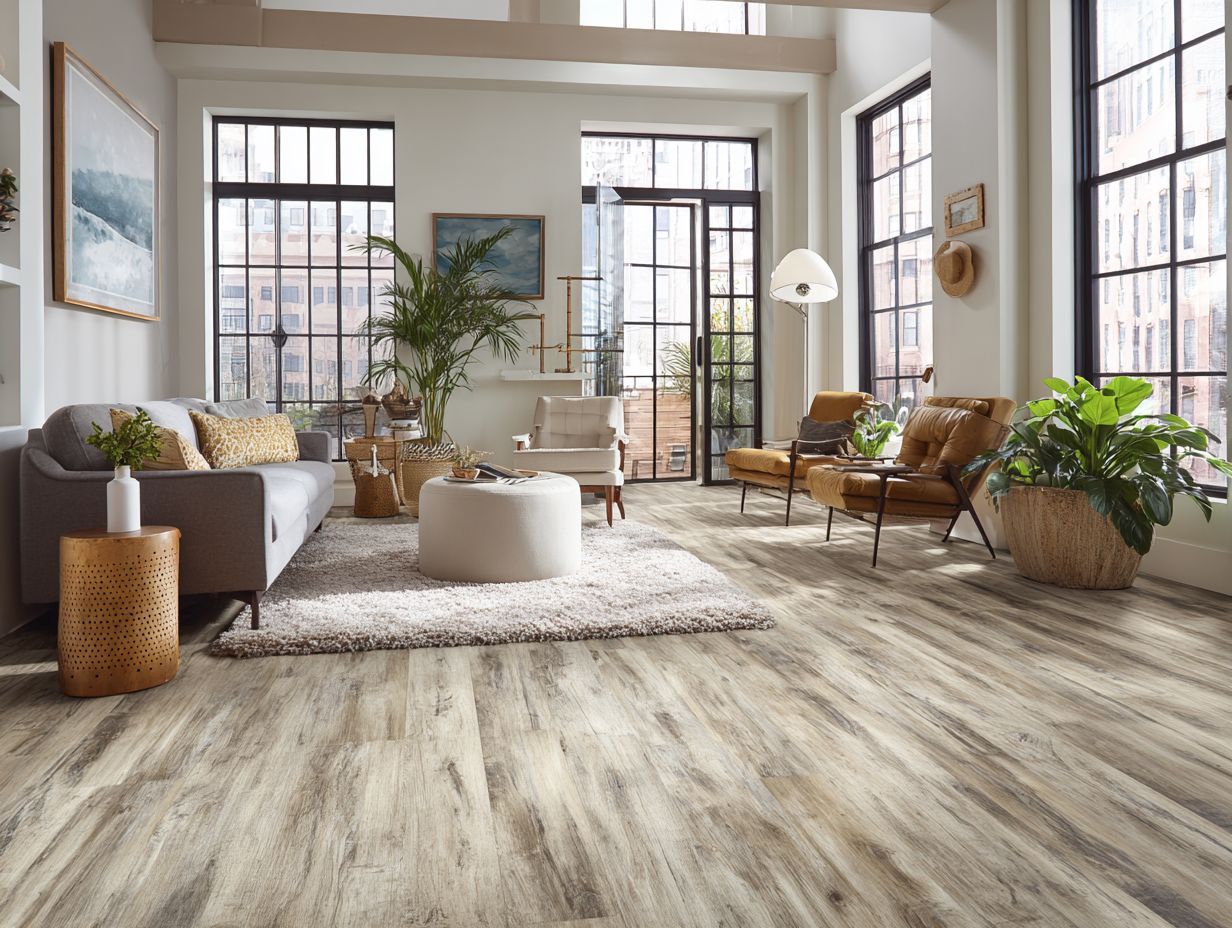
Peel-and-stick tiles are a popular DIY option that combines ease of installation with affordability and style.
To install peel-and-stick tiles, you need the following materials:
- tiles (typically $1-3 per square foot)
- a utility knife
- a straight edge
- a cleaner
Start by measuring your space and purchasing enough tiles for at least 10% more than your area to account for mistakes. Wipe the surface well so the tiles stick properly, then trim your tiles to the right size.
Begin at a corner and peel the backing, pressing firmly as you go. Allocate about 2-4 hours for a standard room, and enjoy a refreshed look at a minimal cost.
Using Vinyl Planks
Luxury vinyl planks (LVP) resemble hardwood floors and are durable and water-resistant, providing a solid choice.
To install LVP, start by gathering essential tools such as a utility knife, straight edge, measuring tape, and a tapping block for interlocking planks.
Proper subfloor preparation is important; make sure it is clean, dry, and level, and fill any gaps or holes. Consider moisture barriers if you’re installing over concrete.
LVP is priced between $2-$7 per square foot, whereas hardwood costs between $5-$15 per square foot. This makes LVP a cheaper choice that still looks good.
Cost-Effective Alternatives to Expensive Flooring
Homeowners can choose from many budget-friendly flooring options that are stylish and long-lasting.
Laminate vs. Hardwood
Comparing laminate and hardwood reveals significant differences in cost, maintenance, and aesthetics to help homeowners choose wisely.
Laminate flooring usually costs between $1 to $3 per square foot, offering an affordable choice ideal for places with a lot of moisture, such as kitchens.
In contrast, hardwood flooring ranges from $5 to $12 per square foot, offering unmatched durability and visual appeal but requiring more maintenance. For example, laminate is scratch-resistant and easy to install, often favored in rental properties.
Meanwhile, hardwood can be refinished multiple times, enhancing longevity in homes where style and sustainability matter. Evaluating these factors will help you make an informed decision based on your budget and lifestyle.
Ceramic Tile vs. Natural Stone
Ceramic tile and natural stone materials both offer distinctive aesthetics, but their costs and maintenance needs vary widely.
Ceramic tiles typically range from $2 to $10 per square foot, which is budget-friendly. Natural stone tiles, such as granite or marble, typically range from $5 to $15.
Maintenance is also different: ceramic floors need regular sweeping and mopping, while stone floors need to be sealed every few years to prevent stains.
For high-traffic areas like kitchens or bathrooms, ceramic is often ideal due to its durability and ease of cleaning, whereas natural stone can lend a luxurious feel to living rooms or entryways, showcasing unique patterns and colors.
Maintenance Tips for Budget Flooring
Maintaining affordable flooring can extend its lifespan and preserve its appearance and functionality.
Cleaning and Care Techniques
Implementing effective cleaning techniques is essential for maintaining the beauty of laminate and luxury vinyl flooring.
Start by dusting your floors with a microfiber mop to prevent scratches. For deeper cleaning, use a pH-balanced cleaner specifically designed for these surfaces. Mix one cup of cleaner with a gallon of warm water and mop in the direction of the grain. Too much water can harm the seams, so don’t let the floors get very wet.
For regular upkeep, establish a weekly cleaning schedule:
- Dust twice a week
- Wet mop every two weeks
This routine will help extend the life of your flooring and keep it looking pristine.
Long-Term Durability Considerations
Checking how long flooring lasts helps homeowners make wise choices for years to come.
When comparing hardwood, laminate, and vinyl flooring, consider their lifespan under varying conditions.
-
Hardwood typically lasts 25-100 years, depending on species and maintenance. It withstands low foot traffic and humidity well but can be prone to scratches.
-
Laminate, with a lifespan of 15-25 years, offers affordability and scratch resistance but is less effective in high-moisture areas.
-
Vinyl can endure for 10-20 years, is waterproof, and is practical for kitchens and bathrooms where there is frequent activity.
Choose based on your specific environment and lifestyle needs.
Incorporating Accessories
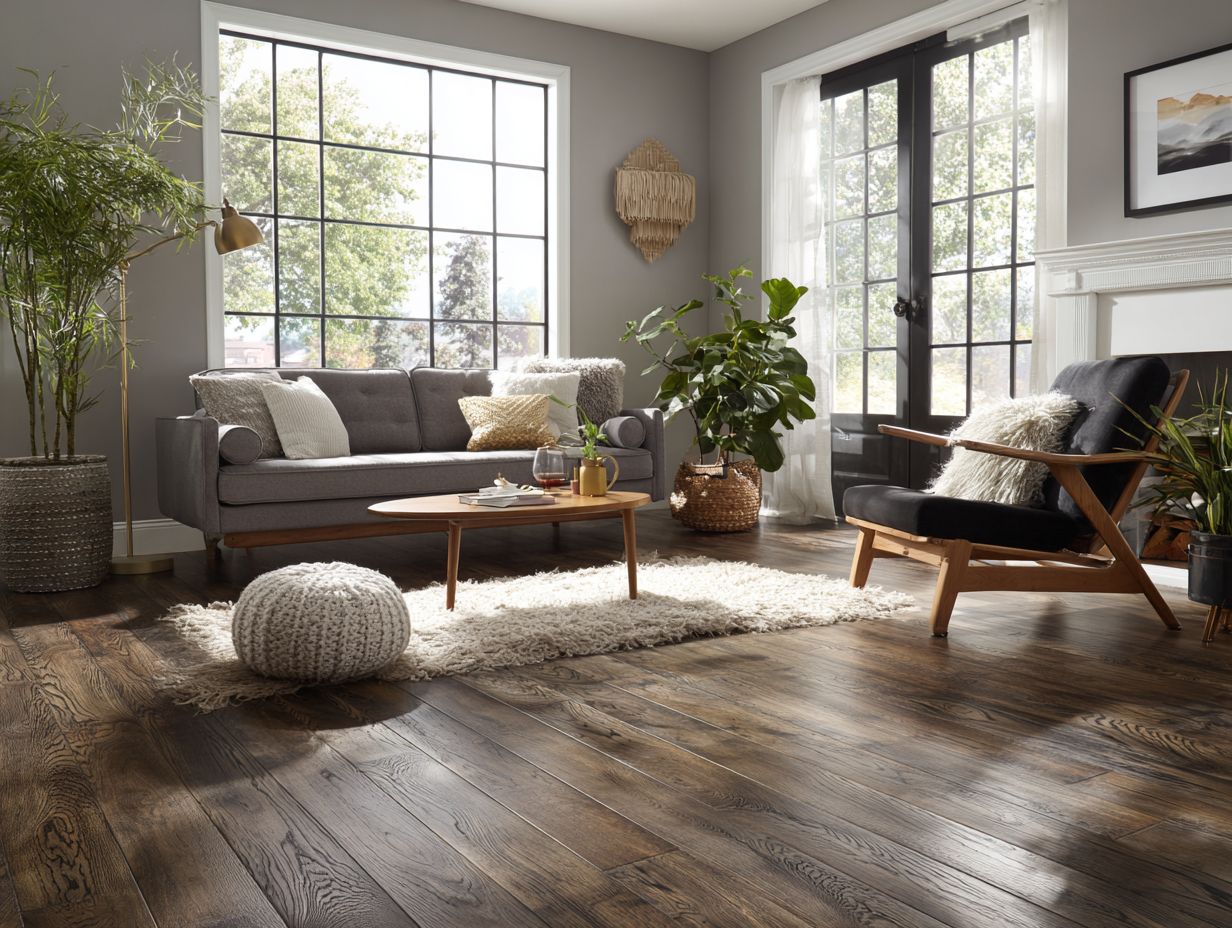
Accessories such as baseboards, trim, and furniture greatly improve the appearance of your flooring.
Baseboards and Trim Options
Choosing the right baseboards and trim adds a final touch, elevating the aesthetic of your entire flooring setup.
Baseboards such as 5-inch MDF offer a contemporary, smooth appearance and are priced approximately $1-$3 per linear foot, which makes them a budget-friendly option.
For a simple and timeless look, choose 7-inch solid wood trim. It usually costs between $3-$7 per foot and is more long-lasting.
Putting up baseboards usually includes measuring, cutting, and attaching them with glue or nails. A typical DIY project like this takes about a weekend.
Finish with caulk and paint for a smooth look that matches your floor.
Furniture Placement and Style
Strategic furniture placement can highlight flooring features while maintaining harmony in the overall space design.
To maximize your flooring’s impact, consider these placement tips:
- For hardwood floors, position larger pieces like sofas or dining tables to create balance and accentuate the grain’s natural beauty.
- If you have tile flooring, use rugs to delineate areas, drawing attention to the textures beneath.
- For carpeted spaces, opt for lighter colors that promote a feeling of openness.
Use visual tools like diagrams to plan possible arrangements. Make sure furniture fits well in the space and highlights the flooring.
Final Thoughts on Budget Flooring
In the end, affordable flooring options can look great, showing that stylish finishes don’t have to be expensive.
Consider laminate, luxury vinyl planks, or even cork as viable, budget-friendly flooring options.
Laminate looks like wood but costs less and doesn’t scratch easily, so it’s perfect for homes with pets. Luxury vinyl planks offer a realistic wood or stone appearance, are waterproof, and can be installed over existing floors, which saves on installation costs. Cork flooring is affordable, environmentally friendly, and comfortable to walk on.
Evaluate your space’s specific needs and aesthetics, and visit a local showroom to find samples that match your vision.
Frequently Asked Questions
What are some budget flooring options that can give the appearance of expensive designer flooring?
Some budget flooring options that can mimic the look of expensive designer flooring include luxury vinyl planks, laminate flooring, and porcelain tile.
How can I make my budget flooring look more expensive?
You can make your budget flooring look more expensive by using larger tiles or planks, opting for darker colors, and adding decorative elements like area rugs.
Are there any affordable flooring materials that can pass for hardwood?
Yes, luxury vinyl planks and laminate flooring can closely resemble hardwood flooring at a fraction of the cost.
What are some designer tricks for creating a luxurious flooring look on a budget?
Some designer tricks include using patterned tiles or planks, adding a high-gloss finish, and incorporating natural elements like stone or wood.
Can I install budget flooring myself, or do I need to hire a professional?
It is possible to install budget flooring yourself, but it’s important to carefully follow instructions and have the necessary tools and skills. Hiring a professional can lead to a better and accurate installation.
Are there any budget flooring options that are durable and long-lasting?
Yes, luxury vinyl planks and porcelain tile are both known for their durability and can withstand heavy foot traffic and moisture. Laminate flooring can also be a durable option if properly maintained.
